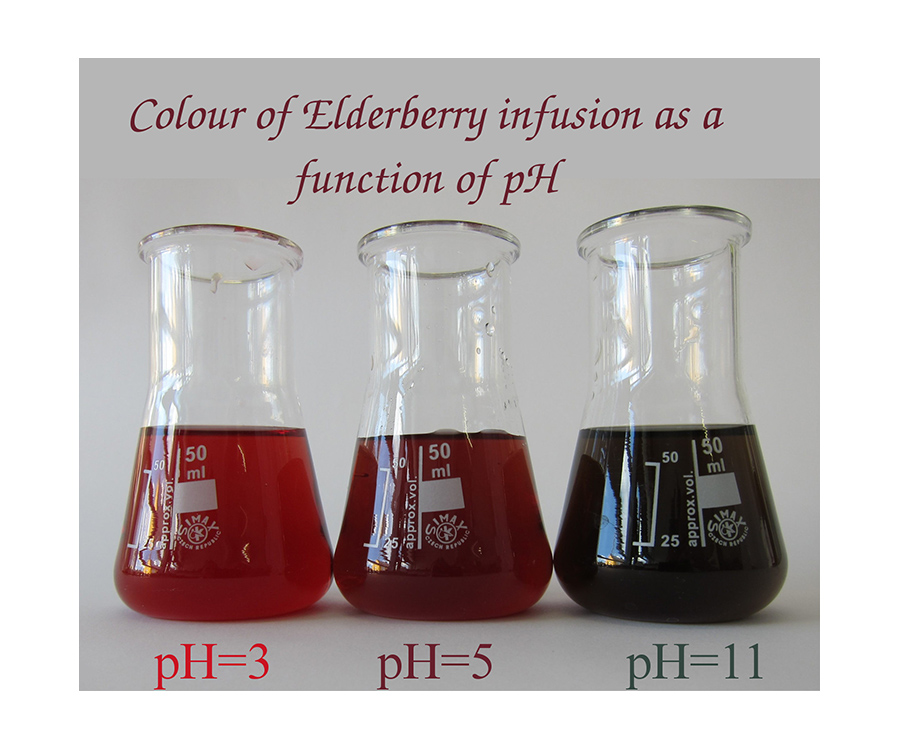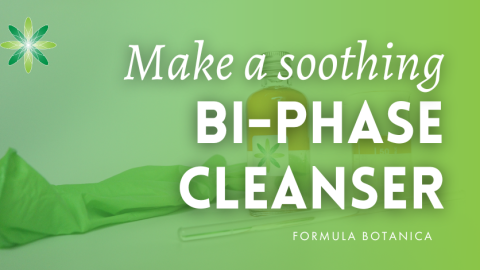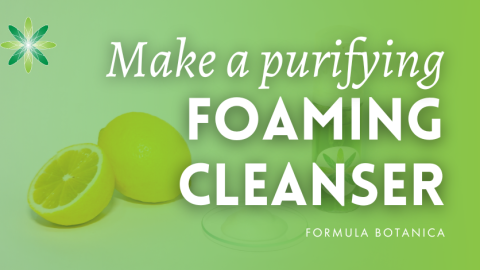Once upon a time most cosmetic products were supposed to have a pH between 4.5 – 6.5 to meet the skin’s pH. This was a globally and legally acknowledged range and you will still read about it in old school cosmetic formulation books – your formulation’s pH was generally expected to fall somewhere within that broad range (depending on what you were formulating).
This broad range, although still legally valid, is no longer technically correct when you’re working with natural and organic cosmetics. In fact, you should keep your formulation’s pH in a much narrower range.
We’ve summarised three reasons here to show you that you need to start paying much more attention to the exact pH of your product:
1. Colour Changes
When making natural skincare, we generally don’t use pigments but instead allow the colour of our products to be dictated by the natural ingredients we use, such as plant oils, extracts, powders or other plant-based ingredients. Most natural formulators view the inherent colour of their ingredients as a wonderful indication of just how natural their products are. However, the colour of many natural ingredients is highly pH dependent.
The beautiful red colour of beetroot or elderberry is caused by their anthocyanins: pigments and antioxidants that belong to a parent class of molecules called flavonoids. Depending on the pH, anthocyanins have a colour spectrum that ranges between dark blue to purple to red. If you want to achieve the same colour shade and product integrity from batch to batch, then you will need to adjust your formulation’s pH to be within a narrow range. You will also need to make sure that the pH of your product does not change during its shelf life, which is why stability testing is so important (check out our Certificate in Cosmetic Stability Testing).
2. Properties of natural ingredients susceptible to pH change
Not only can the colour of your ingredient vary according to its pH, but the properties of your plant-based ingredient are far more likely to be affected than those of mainstream synthetic ingredients. For instance, the antioxidant activity of anthocyanins is affected by modifications in pH and can be decreased if you modify the pH sufficiently. In other words, your ingredients might not have the desired effect on the skin if the overall pH of your product is in the wrong range.
The antioxidant activity of anthocyanins is affected by modifications in pH #CosmeticScience Share on X3. Natural Preservative efficacy is pH dependent
The efficacy of almost all naturally-derived preservatives is pH dependent. If you vary your formulation’s pH by only half a grade, you may completely deactivate some of the preservatives in your product. The supplier of your preservative should always tell you the optimal pH of your preservative and you must take this into consideration as you are formulating your product.
For instance, if your naturally derived preservative is active at a pH of 4 – 4.5 and the overall pH of your product is 6, then you run the risk of your formulation becoming contaminated before it even reaches your customers. This factor alone should convince you about the importance of pH adjustment in your organic cosmetic formulations.
Want to learn more about natural cosmetic preservatives? Read: Everything you wanted to know about natural preservatives.
You might deactivate your preservative if you don't control your pH #CosmeticScience Share on XHow should you measure your formulation’s pH?
Although pH indicator rolls or strips are great when you’re first starting out with formulating, they can be more challenging to work with if you are trying to achieve a narrow range for your formulation’s pH. After all, pH strips are not as precise as a pH meter.
When you start seriously formulating and manufacturing natural cosmetics, you should consider investing in a reliable pH meter with a glass electrode.
pH meters vary in optic, performance, precision and complexity. It might be quite overwhelming knowing which pH meter to choose, particularly when faced with the large number of options available and the broad price range of pH meters – they can vary in price between €10 to €10,000.
You can purchase a precise and simple pH meter for your artisan lab with a budget of somewhere between €40-100. It is worth investing in a proper pH meter when you are preparing water-based products such as toners, shampoos, lotions, hydrogels, etc.< Have you ever experienced any pH related disasters in your artisan lab when working with natural ingredients? Share your experiences with us below in the comments!
Leave us a comment

Dr. Elham Eghbali was Formula Botanica’s Cosmetic Chemist between 2014 and 2018. She has over 20 years’ industry experience and is based in Bavaria, Germany. To read more about Formula Botanica’s team, visit our staff page.




























